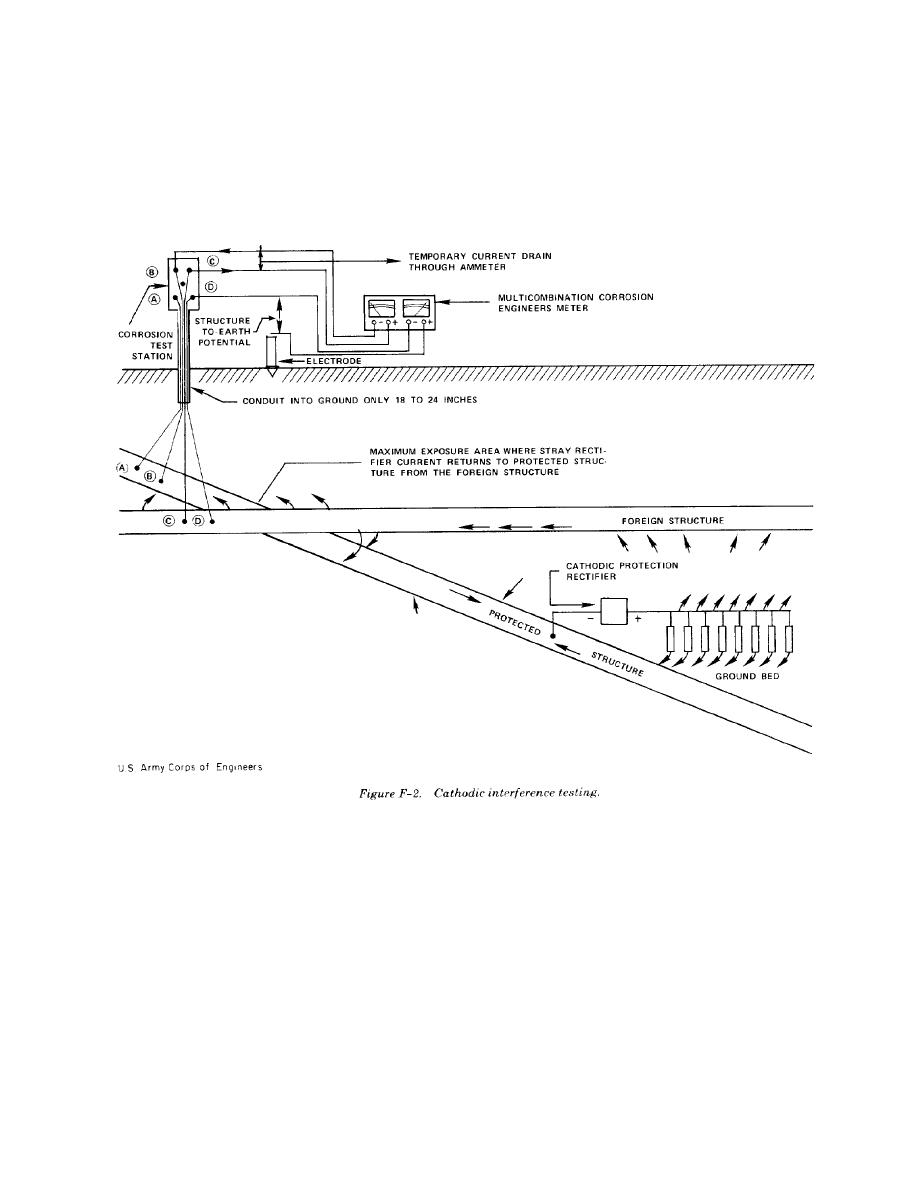
TM 5-811-7
(2) To determine if cathodic interference exists at one of these prime suspect areas, the following
should be done:
(a) Refer to figure f-2. Using a high-resistance voltmeter (100,000 ohms per volt or higher) or a
potentiometer-voltmeter circuit, measure the structure-to-earth potential of the foreign structure at the
crossing with all of the proposed rectifiers off. This is called the "natural" or "original" potential. When
making this test, one terminal of the voltmeter should be connected to the foreign structure and the other
terminal connected to a copper-copper sulfate half-cell electrode. The electrode should be placed on the
surface of the earth directly over the structure to be observed.
(b) Turn one of the rectifiers on and record the potential as in a above with the electrode in the same
location. Repeat this procedure with the other rectifiers one at a time to determine which rectifiers are
causing the interference and in what proportion. If the negative structure-to-earth potential is decreased or
swung toward the positive direction when the rectifiers are turned on, current is leaving the structure and
cathodic interference exists.
b. Correction of interference.
(1) When interference has been discovered, permanent corrosion test stations must be installed. During
the preliminary tests for cathodic interference, the minimum size of the wires required for draining the
necessary current should be calculated. Make a temporary bond between the foreign structure wire and the
protected structure wire. The current drained should be measured by placing a milliammeter or am meter in
the circuit. All rectifiers that affect the particular crossing being tested must be turned on for this current drain
test. The following measurements must be recorded: natural structure-to-earth potential of foreign structure;
structure-to-earth potential of foreign structure with all affecting rectifiers ??? structure-to-earth potential
of foreign structure with temporary bond in; current through temporary bond, and potential between the
foreign structure and protected structure with temporary bond in. A meter with a small scale such as the
F-2



 Previous Page
Previous Page
